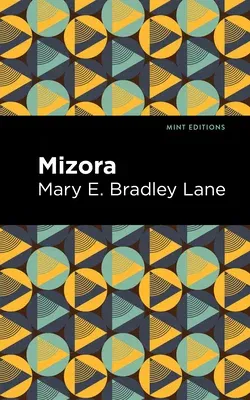Mizora (1890) is a novel by Mary E. Bradley Lane. Originally
serialized between 1880 and 1881 in the Cincinnati Commercial, the
novel was rediscovered a decade later and printed by prominent editor
Murat Halstead. While little is known about Lane, she seems to have been
a dedicated feminist and a gifted writer who nevertheless, by the time
Halstead reached out to republish her work, seemed to want nothing to do
with the appearance of Mizora in novel form. Regardless, Mizora
remains a pioneering work of feminist utopian science fiction and an
early example of the hollow earth subgenre of science fiction and
fantasy. "Overhead, clouds of the most gorgeous hues, like precious gems
converted into vapor, floated in a sky of the serenest azure. The
languorous atmosphere, the beauty of the heavens, the inviting shores,
produced in me a feeling of contentment not easily described. To add to
my senses another enjoyment, my ears were greeted with sounds of sweet
music, in which I detected the mingling of human voices." Princess Vera
Zarovitch has lived a tragic life. Born into wealth, she studied in
Paris and gained an understanding of the world beyond Tsarist Russia.
Imprisoned for criticizing the state after witnessing her friend's
murder at the hands of Russian soldiers, she escapes with a party of
smugglers toward the North Pole. Following a devastating shipwreck,
their party takes refuge with the local Eskimo, who care for the captain
until his death from exposure. Abandoned by the men tasked with bringing
her to safety, Vera is lost in a storm. When she awakens, she finds
herself in the underground world of Mizora, where an advanced society of
women has eliminated war and poverty altogether. With a beautifully
designed cover and professionally typeset manuscript, this edition of
Mary E. Bradley Lane's Mizora is a classic of feminist utopian science
fiction reimagined for modern readers.

